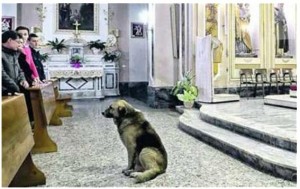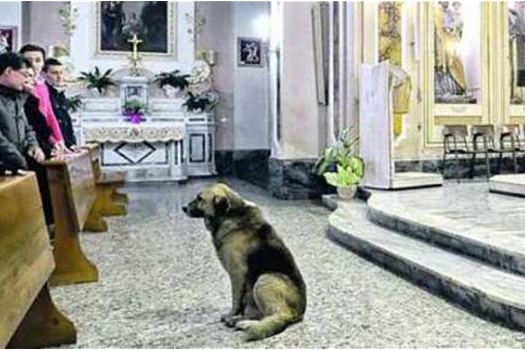The following article appeared in the UK Guardian and was written by Riazat Butt, Religious affairs correspondent. My remarks are in red.
In recent years the communion wafer has been made available in a variety of forms – including patterned, wholemeal, crumb-proof and gluten-free – to satisfy the demands of modern life. Soon, altar bread will become even more convenient and accessible with the advent of the “host in the post”. That’s right they are offering to mail your Holy Communion to your house!
The new service, from the Open Episcopal Church, (Thank God such a crazy idea would never be allowed in the Catholic where the True Presence is so powerfully experienced.) is aimed at people who either cannot attend Eucharist, through age or ill-health, or those who have drifted away from church. (What about visiting the sick? One of the corporal works of of mercy is to visit the sick, not mail them communion. A spiritual work of mercy is to correct the sinner not mail communion to drifters)
Although the pre-consecrated wafer is free, there will be a charge for postage and packing. Receiving one host costs £2; receiving 500 costs £10. (Oh come on, how stingy, can’t you afford the price of a little stamp to mail out Jesus?)
Jonathan Blake, the Open Episcopal Church bishop… said the initiative was also designed to reverse the way the church presented itself to people. “The sense they have to go to places to worship is something their parents did. The churches we work with have got respect for the fact that we’re taking the church to places it hasn’t been before. (No you aren’t. To presume that the Church is just some sort of mail list is absurd. Go to the sick, talk to them, listen to them, anoint them. Reach out to drifters and the unevangelized. Actually meet them. Talk, listen, invite. Jesus said, Go into the town and villages, sure the sick and summon people to faith. Physical proximity IS important. Jesus didn’t say mail letters, he said GO (cf Matt 28)
“It is a mistake to locate a church as those who gather in a building. There is a large population who have haemorrhaged away from church but regard themselves as committed Christians.” (So mail Jesus to them? What about correcting their mistaken notions that Sunday communal worship isn’t essential to being a “committed Christian” ? What about teaching that God commands that we keep holy the Sabbath. Maybe people drift away because you don’t teach them anything or expect anything. Just a thought. )
He said the organisation was taking “care and concern” over appropriate packaging for the wafer, (well that’s a relief!) which is no more than a millimetre thick, to ensure it remained intact on arrival, before adding that anyone – including atheists and even satanists – could avail themselves of the service. “Jesus did not make these distinctions. He gave himself to anyone and everyone. It makes no difference, the body of Christ is redeeming.” (That’s right, Jesus doesn’t care about desecration…uh wait a minute…maybe he does read Matt 7:6…. and while you’re at it read what his Holy Spirit inspired Paul to write: ! Cor 11:27-31)
News of Blake’s latest innovation did not elicit a response from the Church of England, which, as a rule, does not comment on the internal affairs of other churches. (sigh…)
_____________________________________End of Article
Well, there you have it. A horrible loss in sacramental theology as well as ecclesiology. Theoretically the Episcopal Church has some belief in the true presence, though we as Catholics do not accept that they have it…but set that aside for a moment. How can someone who believes in the true presence ever put the Eucharist in the mail.? It is unthinkable but the unthinkable has happened. As Catholics we are preparing to celebrate Corpus Christi Sunday wherein we reaffirm our belief in the true presence of Jesus in the Eucharist and make atonement for disbelief in this sacrament. Consider well what you have just read and the thinking behind it. Reaffirm your faith in our Lord’s True Presence and pray for all to return devotedly to this most Blessed Sacrament found truly in the Catholic Church.
Consider too the faulty notion of the Church operative in this silly idea. To presume that the Church can or does exist only as a mail list is absurd. Christ wants to gather us together in a true communion that includes our physical presence to others in the Body of Christ. The Church does not exist in the “ether” or in some sort of vague togetherness but in an actual communion of persons with each other and with Christ. The Church is gathered, not scattered. The Church may communicate to the broader world through mail or in other ways but ultimately a Church that does not gather is no Church at all. Communion CANNOT be received alone. It must be ministered to us and received in communion with others. Jesus celebrated the First Communion with the Apostles gathered. He did not tell them to go to their houses and there they would find a little gift he had sent them. He gathered them, prayed for them taught them and fed them. This is true Charity. To go out and gather the lost and the drifted, the unevangelized and gather them together in the unity Christ intends, and to feed them with his body and blood.
This video is a musical setting the ancient hymn “Ubi Caritas” by Durufle. The text is Ubi caritas et amor Deus ibi est. Congregavit nos in unum Christi amor. (Where there is charity and love, God is there. The Love of Chirst GATHERS us in one). So the love of Christ wants to gather us, not have us remain scattered. That is why he sent us out to gather in disciples of all the nations (not just send them mail).
 The picture at right shows “Tommy” the Dog. According to the article which featured the picture, Tommy the dog has not missed a single mass in the small church in southern Italy where his owner’s funeral was held. When the bells of the Santa Maria Assunta church in San Donaci toll each afternoon the 12-year-old German Shepherd sets off from the village to get himself a front row seat next to the altar. After following his mistress’s coffin up to the church on the day of her funeral, Tommy has returned daily, sitting quietly throughout masses, baptisms and funerals, according to local priest Donato Panna, who now wouldn’t do without him.
The picture at right shows “Tommy” the Dog. According to the article which featured the picture, Tommy the dog has not missed a single mass in the small church in southern Italy where his owner’s funeral was held. When the bells of the Santa Maria Assunta church in San Donaci toll each afternoon the 12-year-old German Shepherd sets off from the village to get himself a front row seat next to the altar. After following his mistress’s coffin up to the church on the day of her funeral, Tommy has returned daily, sitting quietly throughout masses, baptisms and funerals, according to local priest Donato Panna, who now wouldn’t do without him.
